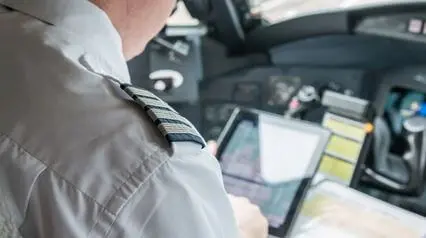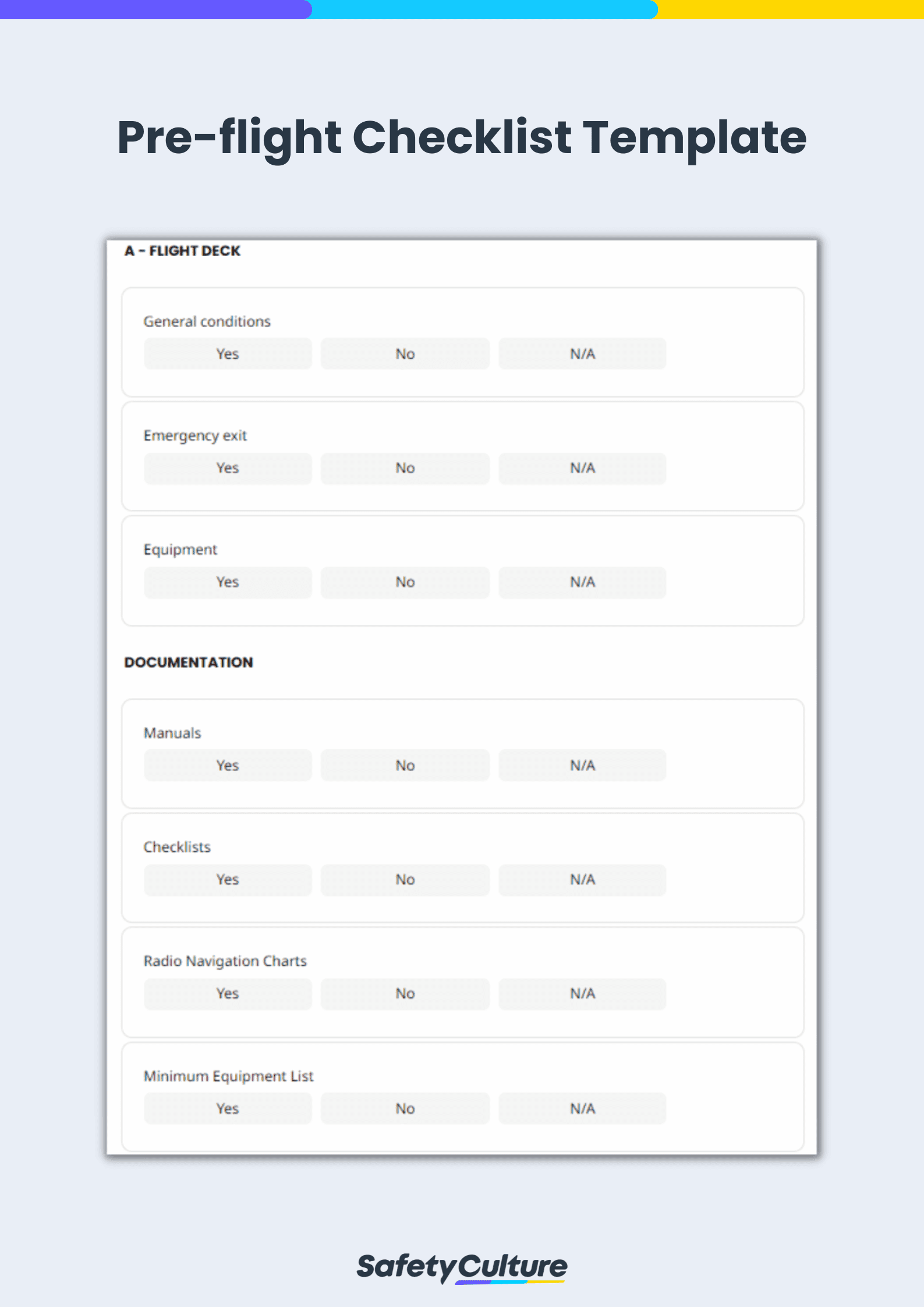What is a Pre-flight Checklist?
A pre-flight checklist or before-takeoff checklist is a compilation of items that should be checked before a flight. Sometimes stylized as preflight checklists, these checklists prompt inspectors before flying that they have not forgotten anything and to check their fluid levels, ensure the plane is armed for takeoff, and confirm all passengers are accounted for.
Why is it Important?
In the aviation industry, a pre-flight checklist is required by many airlines as part of preparing for a flight. These checklists are important because it helps pilots ensure that they have completed all the tasks necessary for a safe flight. By completing a pre-flight checklist, pilots can reduce the chances of forgetting something important and ensure that they are prepared for the flight.
A pre-flight checklist can also be used for documentation purposes to show trends and common issues. Using a pre-flight checklist can also ensure that the aircraft is in the right operating condition and quality to fly.
Historically, many accidents have been found to have been avoidable if only the aircraft, its parts, and its surrounding environment were assessed properly. Having a pre-flight checklist to help you with your inspections can then be beneficial not only for your safety but also for the quality of your aircraft, ensuring you can conduct maintenance checks and repairs when necessary.
How to Perform a Pre-flight Inspection
A pre-flight inspection is usually done following this order:
- Give a “once over” to the entire aircraft and actively look out for visible problems such as flat or damaged tires, bent or damaged wings, fuselage, or gear struts.
- Conduct an ARROW check at the cockpit and inspect if you have the necessary documents to legally fly. ARROW stands for Airworthiness certificate, Registration, Radio station license, Operating limitation documents, and Weight and balance information.
- Examine the aircraft’s flying log into have an insight on its maintenance, previous flights, issues, and fuel consumption.
- Check the cockpit switches and ensure that they are all flipped in their proper positions and that all brakes are working properly.
- Look out for possible anomalies inside the cockpit and elsewhere in the aircraft. Make sure to report any loose screws, broken vents, dirty windows, low fuel levels, and other possible concerns before taking flight.
All these tasks can be difficult to remember and keep track of, so it is recommended by many airlines and aviation professionals that a checklist should be used for conducting a pre-flight inspection.
What Should a Pre-flight Checklist Include?
Different aircraft can call for different ways of conducting a pre-flight checklist. However, common items on a pre-flight checklist to keep an eye out for include the following:
- Weather status
- General status of the aircraft
- Aircraft wheels, doors, wings, and propellers
- Necessary documentation following the ARROW mnemonic
- Necessary licenses
- Certificate of airworthiness
- Fire extinguishers
- Life jackets
- Oxygen equipment and other safety and emergency equipment
- Emergency lights and emergency exits
Here is a pre-flight checklist example report for reference:
Any issues found on and in the aircraft should also be ideally reported through the pre-flight checklist. While some checklists provide a portion to report problems found during the pre-flight inspection, it would be best to use a checklist that will allow you to note issues as they arise. It would be more efficient to list down your issues with each item you are inspecting so your captain and the proper maintenance personnel can better help you.
FAQs about Pre-flight Checklists
In some situations, it is the airline or aircraft manufacturer who provides the pre-flight checklists. However, in other cases, the pilots themselves can make their own checklists.
For an easier way of creating and using a pre-flight checklist, consider turning your checklist into a template. This can help the inspection process flow smoother and improve recordkeeping practices, as everything will be uniform.
In the US, the Federal Aviation Administration (FAA) requires all aircraft pilots to conduct pre-flight inspections before take-off. This standard is followed by many countries as a way to ensure pilot, passenger, and cargo safety. Following this, it has become common practice for many to use a checklist to ensure compliance.
Common mistakes with pre-flight inspections and using pre-flight checklists are:
- Not completing the checklist in its entirety
- Rushing to complete the checklist
- Forgetting to check fuel levels and brake and engine conditions
- Not reporting issues




